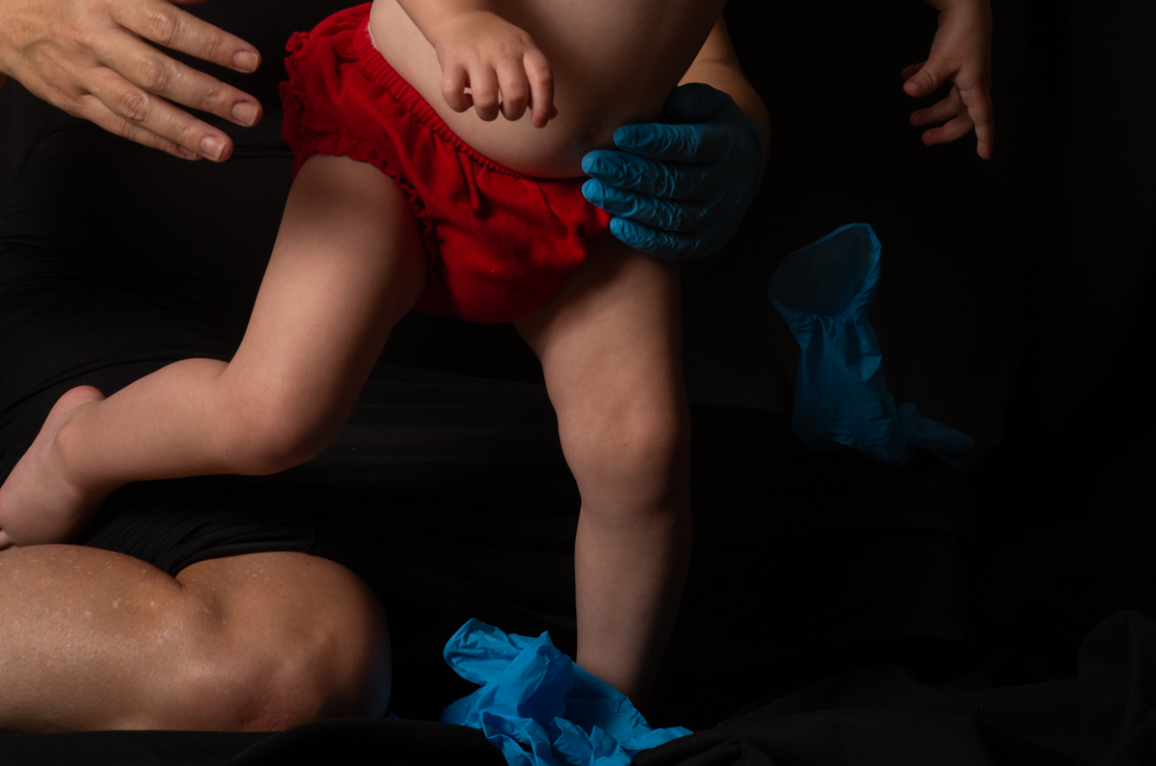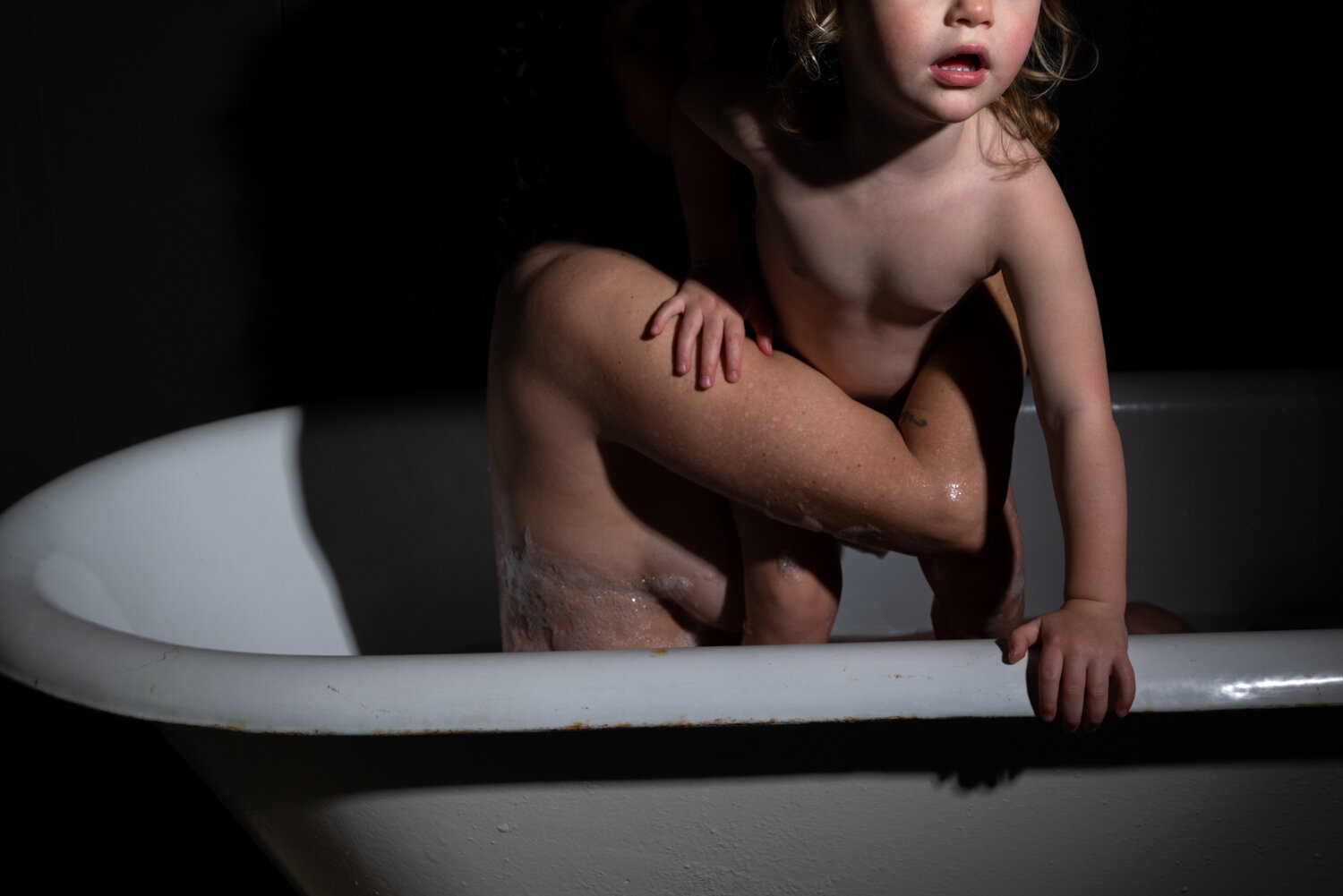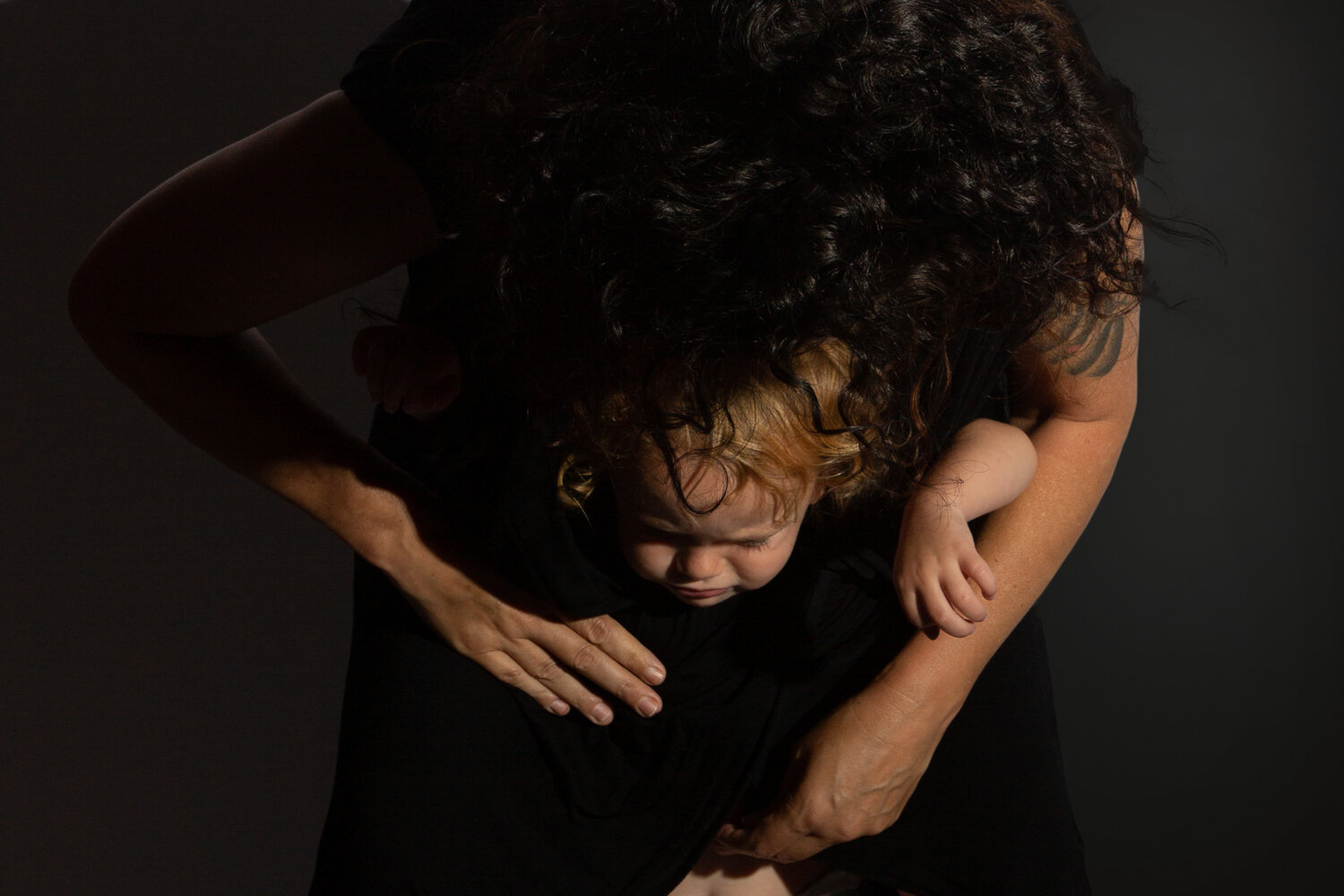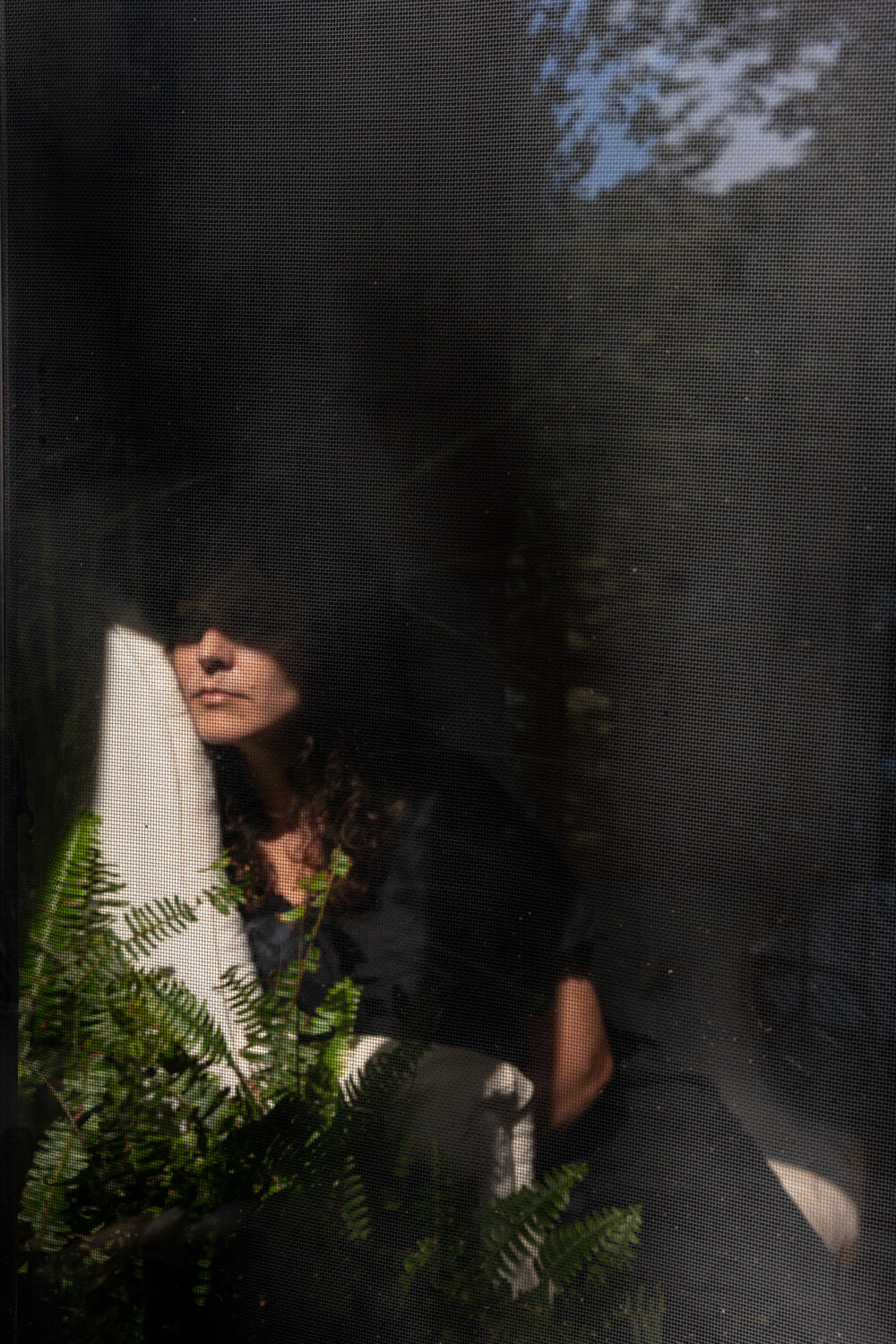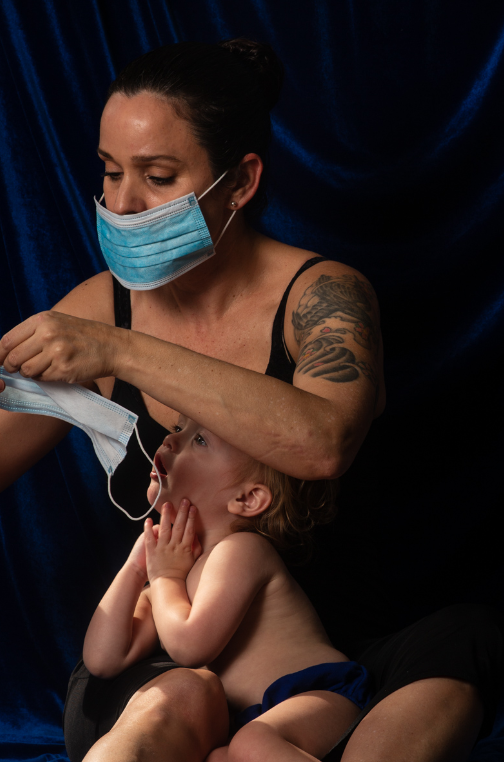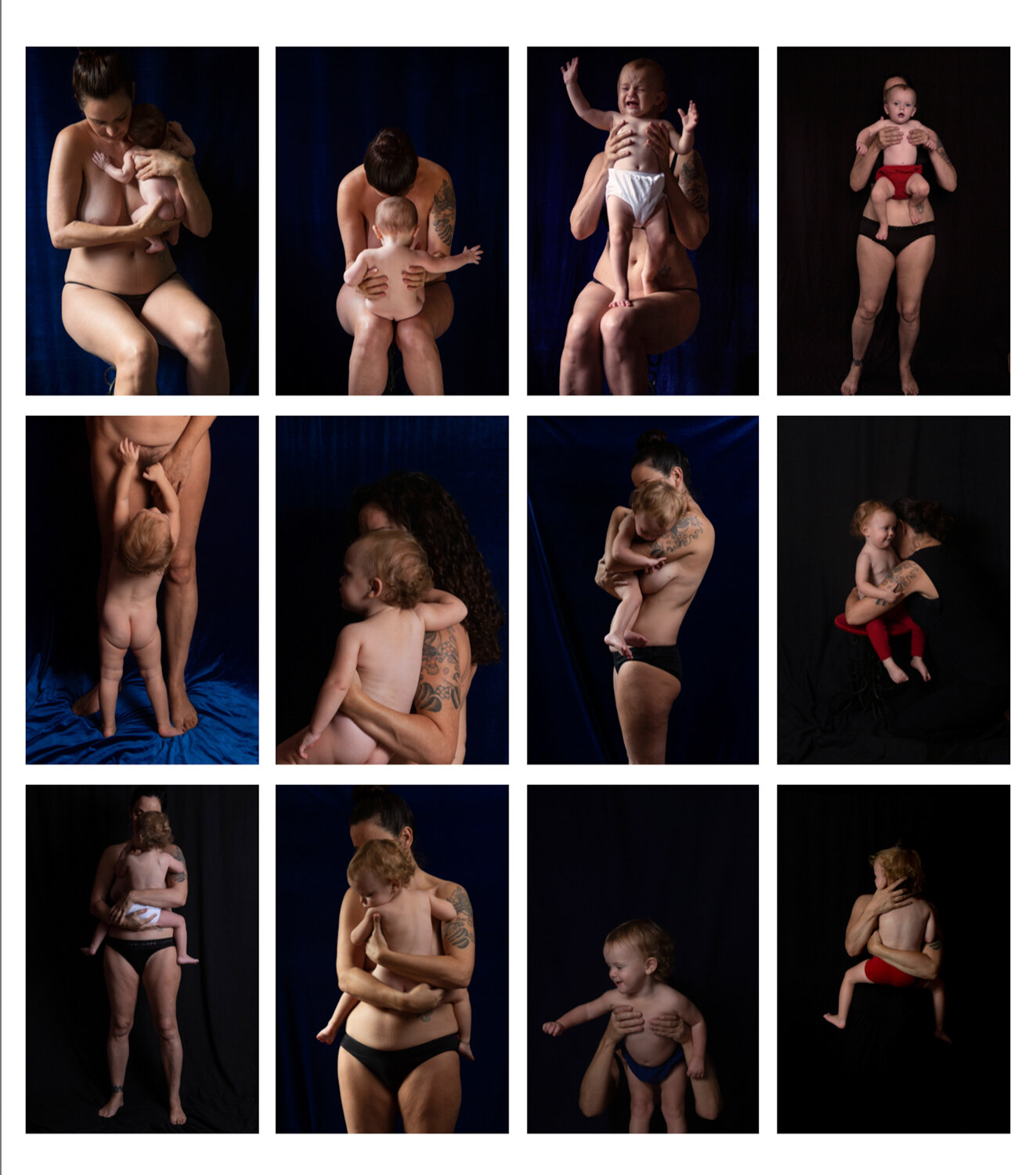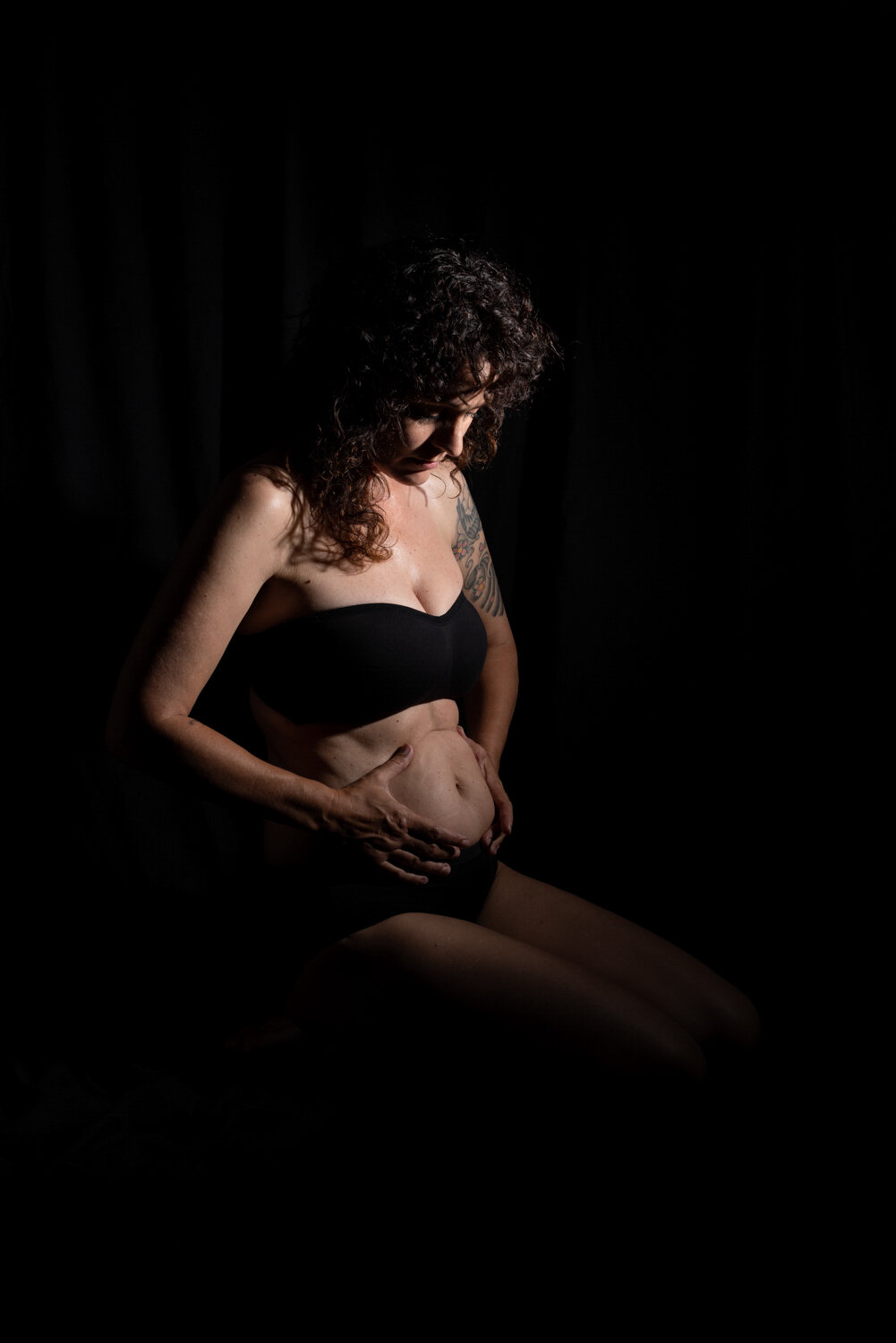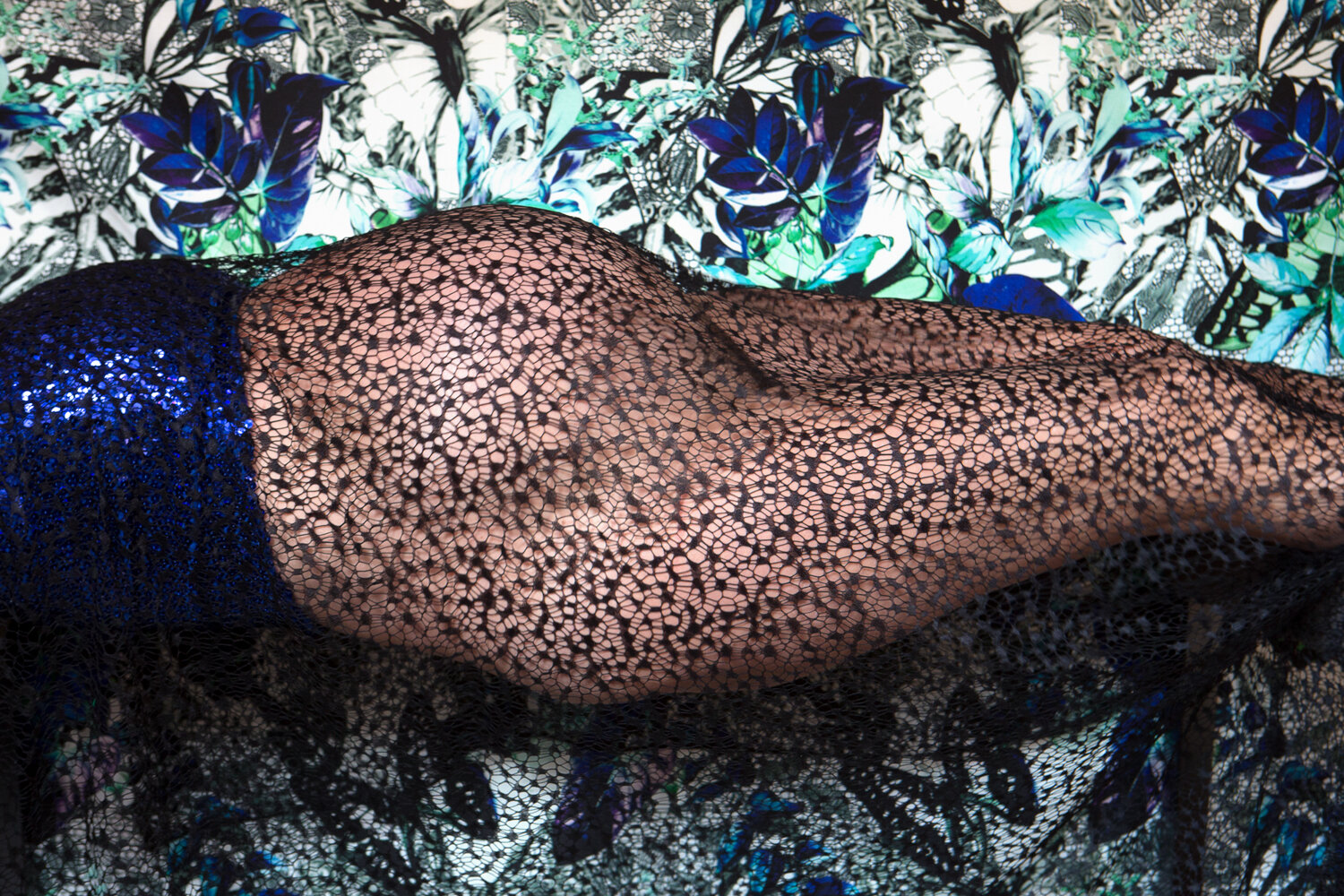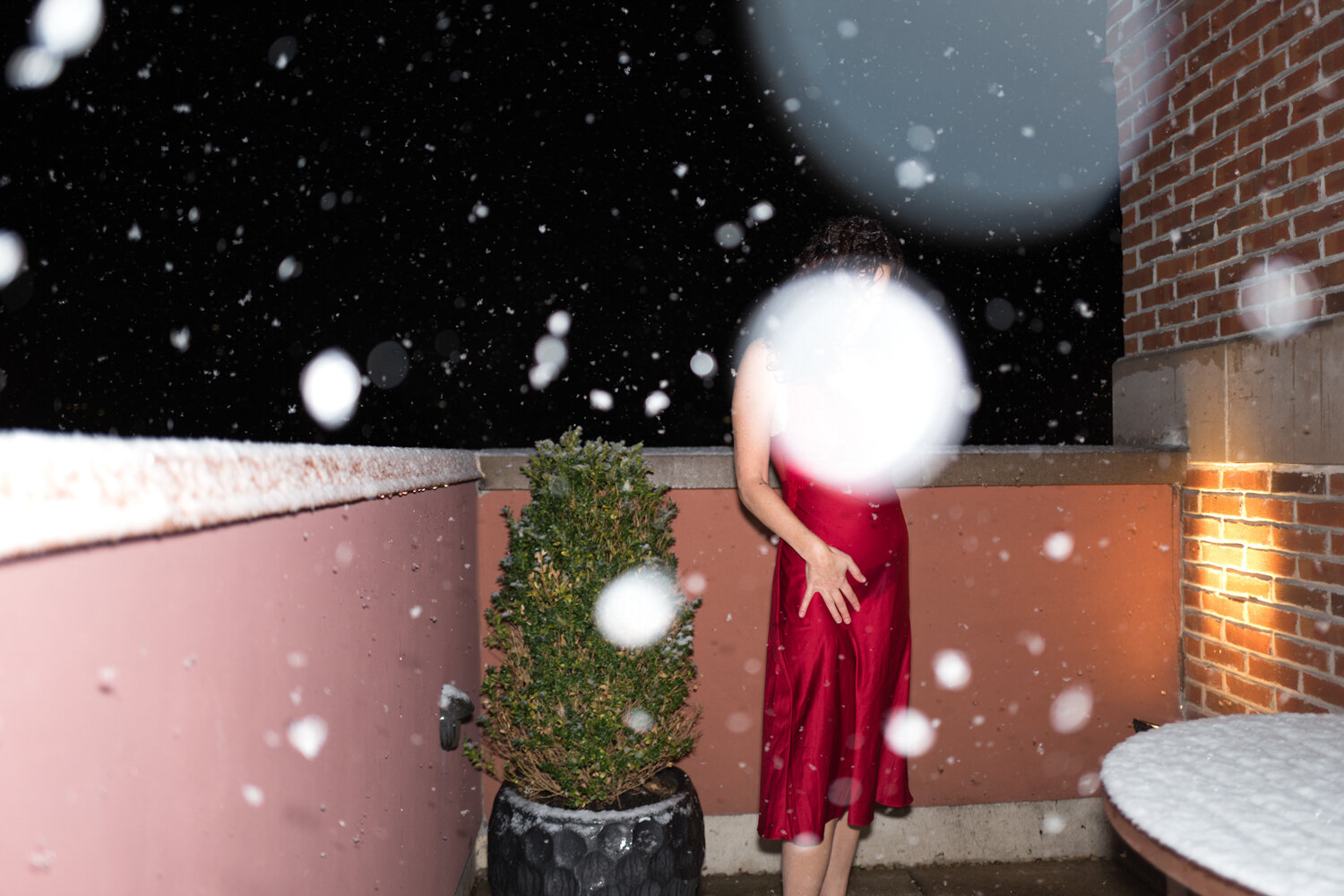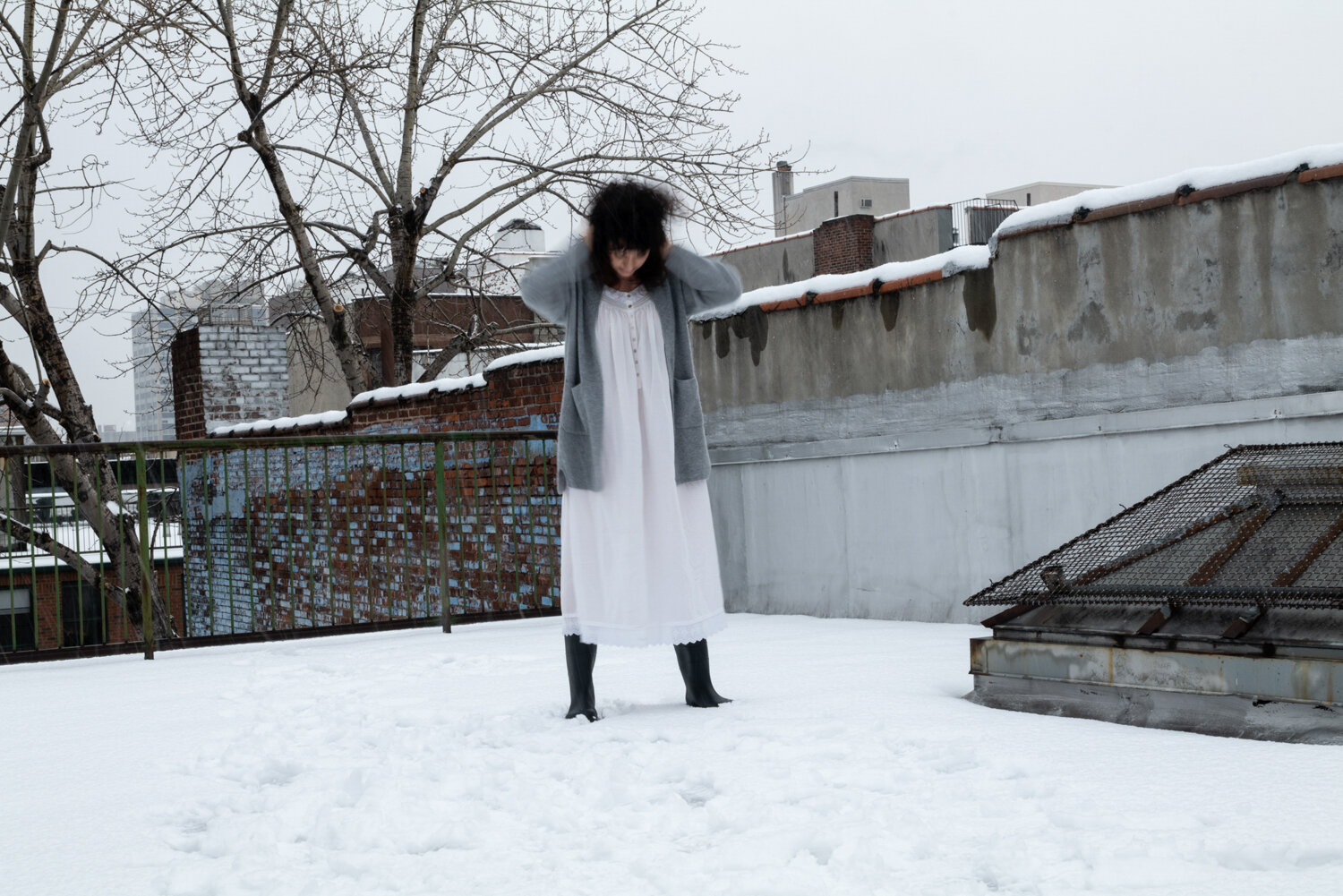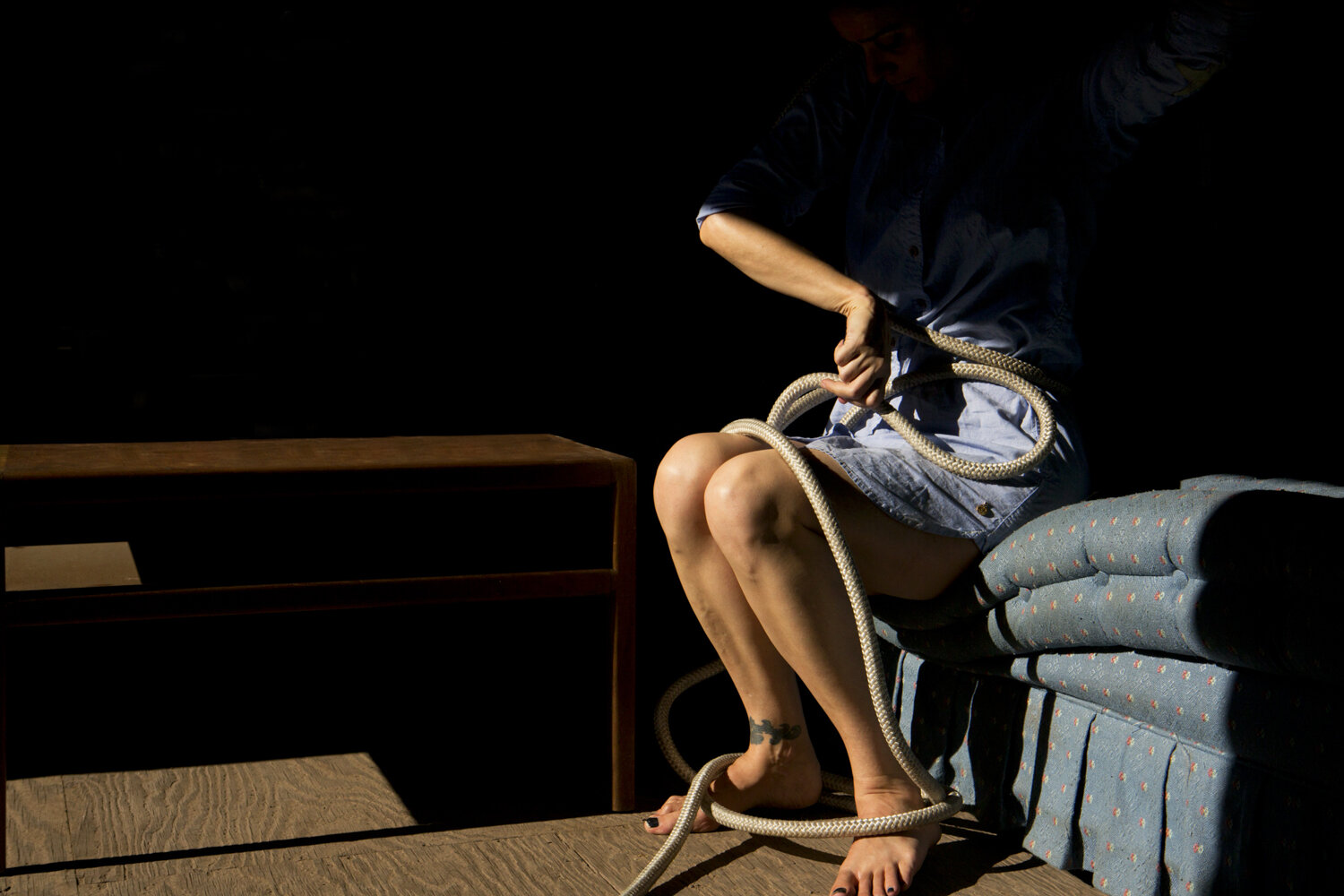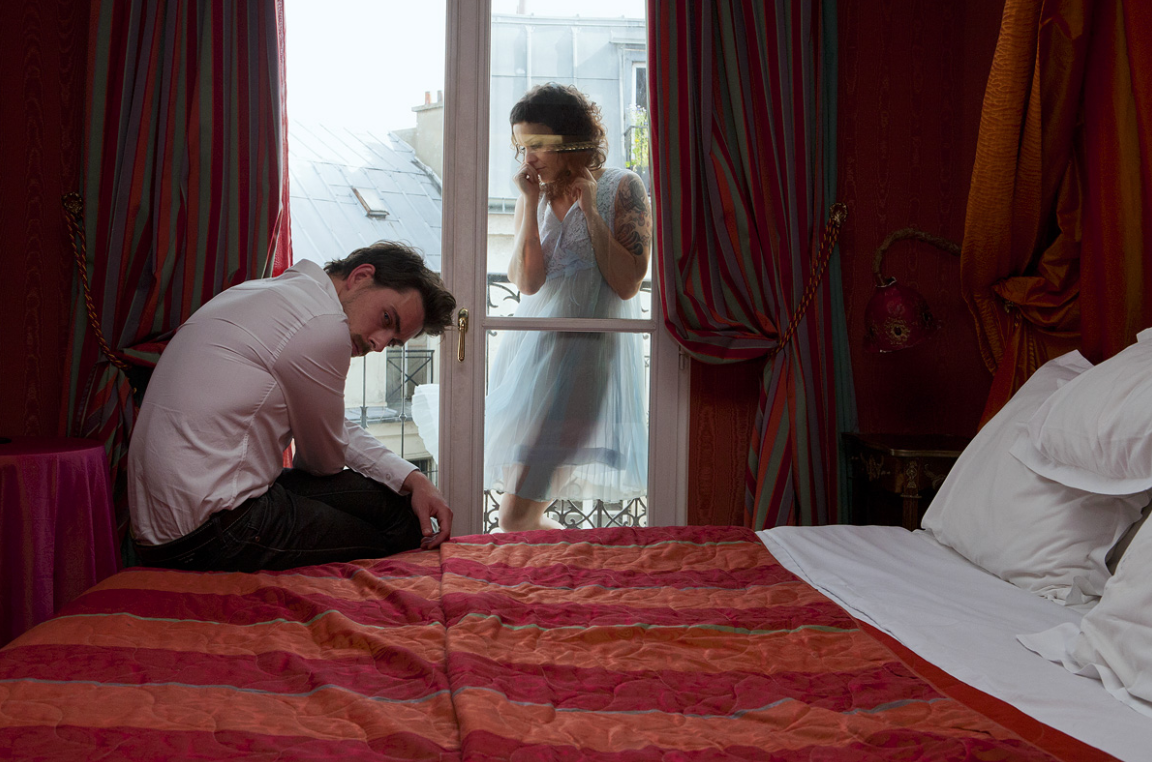Q&A: Jennifer McClure
By Hamidah Glasgow | September 30, 2021
Jennifer McClure is a fine art photographer based in New York City. She uses the camera to ask and answer questions. Her work is about longing, solitude, and an ambivalent yearning for connection. She often uses herself and her experiences as subject matter to explore the creation of personal mythology and the agency of identity.
Jennifer was a 2019 and 2017 Critical Mass Top 50 finalist and twice received the Arthur Griffin Legacy Award from the Griffin Museum of Photography's Juried Exhibitions. The Leica Gallery in Boston will present a solo show of her work in 2021. Her first book, You Who Never Arrived, was published as one of nine Peanut Press Portfolios in 2020. She was awarded CENTER's Editor's Choice by Susan White of Vanity Fair in 2013 and has been exhibited in numerous shows across the country. Her work has been featured in publications such as Vogue, NatGeo Travel, GUP, The New Republic, Lenscratch, Feature Shoot, L'Oeil de la Photographie, The Photo Review, Dwell, Adbusters, and PDN. She has taught workshops for Leica Akademie, International Center of Photography, Los Angeles Center of Photography, PDN's PhotoPlus Expo, the Maine Media Workshops, the Griffin Museum, and Fotofusion. She founded the Women's Photo Alliance in 2015.
HG: Let’s start with your newest images and work our way backward. Your ongoing series, Today, When I Could Do Nothing, is all about your becoming a mother at 46 and all that followed, including the pandemic. Tell me more about the work.
JM: I never expected to be a mother. I was forty-six when she was born, and I spent 21 days in the hospital after her birth. I was late getting to know her. Our first year was one of isolation, exhaustion, gratitude, and confusion. We put her in daycare two days a week after her first birthday. I felt guilty when I wasn’t with her, and I felt guilty when I wasn’t working; I wasn’t fully present for either. The shelter-in-place order changed everything. We were back to those early days, but this time I was head over heels in love with her.
Esme was eighteen months old when the quarantine began. She and I stayed inside for weeks. We started making pictures daily as a way to fill the hours. These were the only times I was completely in the moment, not worried or anxious. I looked for magic and escape. I photographed the things I wanted to hold in my heart, and I tried to experience this strange new world through her eyes. And we were careful, so very careful. She was never supposed to be here. She could all too easily disappear.
We have slowly returned to a somewhat normal life. But there exists a push and a pull, a need for freedom and a desire to cocoon. The separation process that would have occurred naturally has been suspended. I’m late getting to know the person I am now. Our boundaries are lines drawn in the sand, gone before I can grasp them. I want to dive into her, I want to push her away. We no longer live in fear of losing each other, but I wonder what we have lost and gained of ourselves.
HG: The work before that series is Still The Body. Which is about being pregnant and how you never expected to become a mother. With a fraught relationship to your own mother and a lifetime of independence, this time in your life was difficult.
JM: I got pregnant on my wedding night. I was forty-five. Several doctors had mentioned that children weren’t in the cards for me, and I had long since stopped contemplating the idea. We were terrified. A million things could go wrong, and we had already made plans for ourselves. Time passed and we made no decision. That became our decision.
I couldn’t let myself feel joy. I slept and I worried. Would my aging body be able to carry the pregnancy? Would she be healthy? What if we didn’t like each other? How would I know what to do? Would I disappear? I made photos as a way to manage my anxiety, to bring order to the chaos. And as I watched myself grow in the pictures, I saw that my body and my child were on their own path. The act of photographing allowed me to observe the process as though it were happening to someone else. I began to appreciate the oddity of the experience, the imbalance and the enormity.
My body became a signifier, a flag announcing my entrance into this most female of roles. A pregnancy is a strange in-between time, an odd state of limbo. My years before these months were defined by independence; I made several bodies of work about not needing marriage or children to feel complete. I hadn’t even adjusted to being someone’s wife and I was about to be someone’s mother. I had no I idea what kind of mother I would be. Some people regret not having a child. I was worried that I might regret having one.
While I fought my fears about losing my own identity, my body forced me to sit still. My body took over as I struggled with what to hold on to and what to release. There would be an end, there would be a beginning. This was my interlude.
HG: An earlier work is titled, Laws Of Silence and deals with your coming to terms with relationship dynamics in your life. Tell me about this work.
JM: I’ve been afraid of letting go of the life I was programmed to live. I was taught that having a family and a home and a church and a regular job meant that I was successful. My own family life was difficult and displaced, not something I wished to reproduce. I am distrustful of both people and the idea of the American Dream. I’ve avoided any of the rites and rituals that signify “success” but failed to replace a broken mythology with any other.
I began searching for signs of meaningful relationships and missed opportunities, trying to piece together a map of how to be. I needed to look at the past, see it clearly, and then see beyond it. Symbols of a damaged childhood, when contained within a frame, no longer carry the unbounded force of memory. Signs of connection, when taken out of context, reveal themselves to be fallacies. I have been afraid that I will drown in other people. I couldn’t see how water can soothe and sustain as well as destroy.
HG: I'm interested in your exploration of the American Dream and how that idea is such a fallacy for many people. In some ways that "dream" is an old idea forwarded by the dominant heteronormative patriarchy and a culture of consumerism. Also the idea of leaving behind what doesn't work for you. Do you think that this has a lot to do with being a woman in our society and the expectations set for women and what success means?
JM: My parents fully bought into the idea of the American Dream. They both grew up poor, and the idea was that a person went to college, got married, had kids, joined a church, bought a house and a couple of cars, and they would all live happily ever after. The disconnect happens when people check off all of the markers on the storyline and still remain unhappy or dissatisfied. My parents worked their way up Maslow’s hierarchy of needs but got stuck somewhere between love and esteem.
“Laws of Silence” is about why I rejected the expected progression of marriage and family. I come from a time and place where women were supposed to be married by their mid-twenties. This was talked about as if it were a given. My parents got married young and for the wrong reasons, and we saw the tension and anger despite their best efforts. Many of the women around me seemed submissive and afraid, and I knew that’s not how I wanted to be. I didn’t have any examples of strong, single women when I was growing up. And perhaps part of the reason I left the rural South and came to New York City was to escape any pressure, familial or societal, to do what was expected of me. I only knew that I wanted to be a different kind of woman than what I had seen growing up.
I thought I would be a professor or a lawyer, but I’m an artist and I worked in restaurants. The language used when I was growing up was subtle but pervasive: “one day with your own kids, when you have a family of your own…” My actions and my history haven’t conformed to any narrative, but my mind has a hard time translating this from a character flaw to a testament to independence.
HG: The image of you being fully immersed in water is in some ways the signature image of this body of work. Water is a symbol for renewal and rebirth, of cleansing and also of embracing the flow. I can see that this can also be about being groundless. Can you talk about this?
JM: Water can mean so many things, which is why I love using it in my work. I had a bad experience in the water when I was a kid, and I’ve been afraid of going too deep ever since. Sometimes I feel completely overwhelmed and lost with all of the constant questionings about why I am the way that I am, and I want to shut down and hide. This photo is about immersing myself in a situation that scares me, despite my fear. Letting go of the value system I was taught and embracing the unknown is frightening and unsettling. I’m sure many people easily take charge of the narratives of their own lives and don’t give a second thought to discarding tradition. This didn’t come so easily for me, and the process often leaves me feeling groundless and unsure. The beautiful thing about troubled water is that it always clears. I’m learning how to relax with all of this finally. I’m the one who decides whether my life is successful or not: it’s not something that’s determined by a set of circumstances.
HG: I am intrigued by this idea,”…learning how to be alone without being lonely, how to be carried without being overwhelmed, and to walk away from what I want to leave behind.” As women we are inundated with societies expectations and perceived limitations, in order to become ourselves outside the prescriptive model, we do have to walk away or leave behind some societal impositions ( to have children, be married, adhere to prescriptions of beauty as worth) and to have our own unique life. The image of you in the rain speaks to me as you finding some of that freedom. Can you speak about this?
JM: I used to work with a spiritual advisor who would tell me to “walk between the raindrops”. That phrase used to drive me crazy and I obsessed with it. Avoiding the rain is an impossible task. Avoiding relationships and expectations and stereotypes are also impossible tasks. These things are everywhere, in us and in other people, all over the media. I read about the Rain Room, a large-scale digital art installation where the rain falls everywhere except where a person is standing, and I immediately knew I had to make a photograph there. I could be immersed and stay dry at the same time. It’s hard to see that distinctly in the picture, but I am actually walking between the raindrops. For a brief time, I was able to stop the rain. And I had to trust that as I moved forward, a path would clear. This image is about writing my own story despite being constantly surrounded by all of that noise. I think there’s always a back and forth, that we never fully expunge some of these old and pervasive ideas. Letting go is a constant practice, but it is possible to have moments of absolute freedom.
HG: The series before Laws of Silence was Single. Exploring what it means to be single with 50 different people was a huge undertaking that gave you insight into this state of being that seems to be feared by society. Tell me about this work?
JM: I’ve been single more often than not for most of my life. People would ask what was wrong with me. Why was I still single? Why hadn’t I married yet? I didn’t know where to begin with an explanation, and dating felt worse than not looking. So I settled into being single—to learn who I was without a partner and how to be whole on my own.
I started asking other single people how they navigated this territory. Did they define themselves as a presence or an absence—and did I? Are we searching for connection, and would we still feel a lack if we ended up partnered? Is it enough to see ourselves by ourselves, or must there be an “other” to reflect a version back? Is romantic love even a necessary part of the human experience?
These images are fragments, momentary glimpses into a solitary phase of the greater narrative of relationships in each subject’s life. More than fifty people let me photograph and interview them for this project. We planned the portraits together around one question that opened up all the rest: “Where do you feel the most single?”
For years, I’d been making emotional self-portraits that I thought proved I was open and vulnerable, but I’d never been as open with another person as I had been with the camera. I only saw myself. Working with others on these portraits—while contemplating what we’re willing to give and what we hold back—was an exercise in revelation and compromise. I couldn’t ask someone to tell me their hopes, fears, and insecurities without telling mine in return. Fifty times over, I laid myself bare. I hoped for reciprocation but let go of the results. Giving up control over this process allowed us to offer something to each other and to create unexpected work together.
HG: You went from not getting married or having children and making work from that space to getting married and having children in short succession. Everything changed quickly for you in your life. Tell me about that process, and how you are working from this new space, this new reality that in so many ways is, or at least was, foreign to you.
JM: I realized that I was living my life in opposition to certain beliefs, not by any guiding principles that I chose for myself. I did a lot of reading on better ways to navigate this world, most notably books by Pema Chodron. I decided to try to be more open and not cut myself off from experiences out of fear. The Singles Series helped with this process as well. I was honest about the fact that I wanted a partner at some point in my life but that I didn’t need one. The man I had been seeing off and on took note. The marriage was intentional, but the child was a surprise. And so now when I make work, I have to work with and around other people. I have to give up the control I used to have. My work has become much more collaborative and spontaneous. My daughter just started preschool three days a week, so I’m going to have more thoughtful time and clear headspace to make sense of all of this work I’ve amassed since she was born.
HG: I know that your investigations in feminism are making their way into your work. Would you mind talking about these influences and how they are finding their way into your work now?
JM: The work I have been making is all about me, my daughter, my family, and the rapid changes we are experiencing. There are times I think I should be producing more. In Feminist Art and the Maternal, Andrea Liss describes the “double labor” of caring for a child while laboring to make artwork as well. Those are two full-time jobs. It’s okay to relax; my brain will still be working. That book has been my guiding light lately. Liss writes of intersubjectivity or the changing relationships of mothers and children to themselves and each other. This concept has helped me accept the ambiguous photographs I’ve been making for what they are instead of trying to fit them into the good mother/bad mother paradigm that we often see. I also loved Mother Reader: Essential Readings on Motherhood by Moyra Davey. The collected writings are brutally honest and empathetic about this universal experience, but so singular at the same time. The details are important, and the “nothing” moments matter. I’m not so hard on myself for making photographs about the days where not much seems to happen.
HG: Being an artist and mother is a complicated world to inhabit. Tell me about your experiences and what you see is needed for the art world to embrace women/mothers?
JM: I think it’s a given that women still often make less money than men, so that fact is nothing new. My husband has had a different path in the photography world than I have for many reasons, and he makes a much better living from his work. I supported my artwork through bartending, and I wasn’t about to go back to restaurant work simply to pay for childcare. So I took on this more traditional role for practical reasons. I wasn’t expecting it to be such an all-consuming job. I have a very supportive husband, but there simply hasn’t been enough time to work on my own practice fully. Universal childcare would be a huge step in helping all mothers, not just artists. The pandemic has highlighted that our childcare system is broken. There are a handful of grants and residencies that support artist parents, but the competition for those is intense. More funding in those areas would be great. When applying for grants, we should also be able to say that we need the money for childcare without fear of that being a trivial reason.
There is a startling lack of representation of the wide spectrum of motherhood in museums, galleries, and institutions. The Carmen Winant birth exhibit at MoMA was shocking not so much for its subject matter but for the volume of such photos in a place that typically ignores them. The abstract, figurative work of Louise Bourgeois on pregnancy and motherhood, one or two steps removed, seems easier for the institution to digest. Photographs of mothers and their experiences are infinitely varied, as seen in the multitude of hashtags and accounts on social media. Like any genre of art, the cream rises to the top. But as of now, few places are willing to take a chance on showing and legitimizing this topic. Apparently, the most universal of all experiences (we all indeed come from mothers) still needs to be vetted.
HG: Indeed.
HG: It was only very recently, the 1970’s, that women could open their own bank account or buy a house without a man’s permission. How far have we come in gaining independence and equality? Isn’t that a large part of what you are exploring? Or am I wrong about that?
JM: I never set out to explore those questions specifically. Most of my work has to do with emotional connections: how we form them, why we don’t, where they can go wrong, and how that affects us. It’s mostly based on my own experience. If this somehow reflects larger issues, then I’m thrilled, but that was not my intention. I tend to make photographs that work conceptually from the inside out instead of the other way around. I definitely think that women and people of color have quite a ways to go in terms of equality. I’m so excited to see more people using photography and text to make their voices heard.
I would like to mention how the work made by women and minorities has been received by the art world, because I do think this reflects what’s happening in society at large. Helen Molesworth, chief curator of MoCA in LA says this, about the disparity of representation in the fine art world: “Most men—and I hate to take this generalization—but most men think that men make universal statements and women talk about women. You think you’re a universal subject—that is white male privilege.” I’ve had many male reviewers ask me why they should care about my work. So much so that I began asking myself why I should care whether they care about my work. I’ve had a lot of men tell me they don’t understand all this emotional kind of work that’s going around these days. I’m not going to change the way I photograph or tell stories in order to conform to someone else’s ideas of how a photo narrative should work. I don’t believe in the Holy Trinity of landscape, portrait, still life, repeat. And I’m certainly not the most transgressive or experimental of storytellers out there. So the question becomes: How do we educate the gatekeepers? How do we teach them to appreciate work that does not reflect their own experience? Again, not all white men think this way, and not all gatekeepers are white men. But we as minorities have to keep pushing. And instead of knocking on the same closed doors, maybe we have to look for new doors altogether.
HG: Yes! I love this. Thank you for your time and attention.
JM: Thank you!
All images © Jennifer McClure


